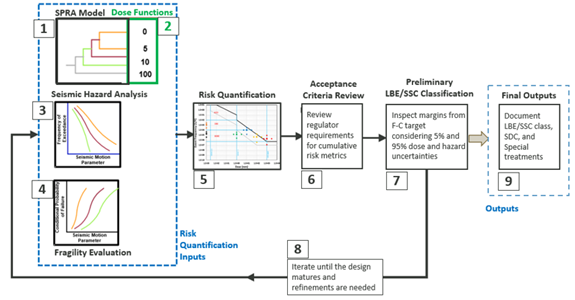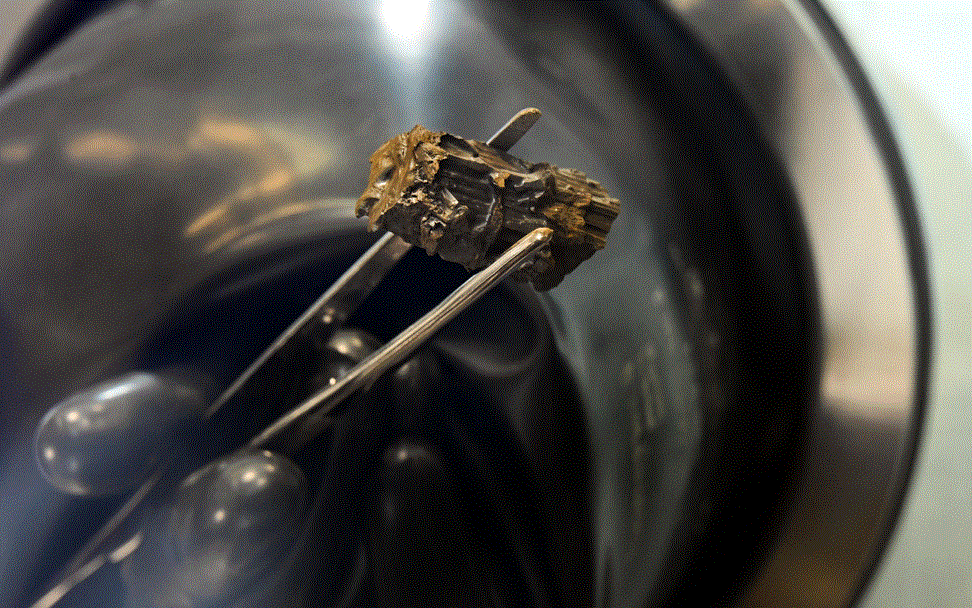The when, where, why, and how of RIPB design
The American Nuclear Society’s Risk-informed, Performance-based Principles and Policy Committee (RP3C) held another presentation in its monthly Community of Practice (CoP) series.

The American Nuclear Society’s Risk-informed, Performance-based Principles and Policy Committee (RP3C) held another presentation in its monthly Community of Practice (CoP) series.
The American Nuclear Society’s Risk-informed, Performance-based Principles and Policy Committee (RP3C) held another presentation in its monthly Community of Practice (CoP) series on May 2.

The American Nuclear Society’s Risk-informed, Performance-based Principles and Policy Committee (RP3C) held another presentation in its monthly Community of Practice (CoP) series on April 4.

Scientists at Idaho National Laboratory continue to make progress on the Molten Chloride Reactor Experiment (MCRE), which entails research and development for the first operational advanced nuclear reactor to use a mixture of molten chloride salt and uranium as fuel and coolant. The experiment is evaluating the safety and physics of the molten chloride fast reactor that Southern Company and TerraPower are planning to build.
In February, the Community of Practice (CoP) webinar series, hosted by the American Nuclear Society Standards Board’s Risk-informed, Performance-based Principles and Policies Committee (RP3C), celebrated its fifth anniversary. Like so many online events, these CoPs brought people together at a time when interacting with others became challenging in early 2020. Since the kickoff CoP, which highlighted the impact that systems engineering has on the design of NuScale’s small modular reactor, the last Friday of most months has featured a new speaker leading a discussion on the use of risk-informed, performance-based (RIPB) thinking in the nuclear industry. Providing a venue to convene for people within ANS and those who found their way online by another route, CoPs are an opportunity for the community to receive answers to their burning questions about the subject at hand. With 50–100 active online participants most months, the conversation is always lively, and knowledge flows freely.

N. Prasad Kadambi
We welcome ANS members who have careered in the community to submit their own Nuclear Legacy stories, so that the personal history of nuclear science and technology can be captured. For information on submitting your stories, contact nucnews@ans.org.
I graduated with a mechanical engineering degree from Osmania University in Hyderabad, India, and took up nuclear engineering when I was awarded a scholarship by an organization called His Exalted Highness The Nizam of Hyderabad’s Charitable Trust. That scholarship enabled me to do graduate work at Pennsylvania State University, and I enrolled there in 1966. One of the terms of the scholarship was that I return to India after graduation. Hence, I returned to India in 1972 after receiving my Ph.D. and began working at the Bhabha Atomic Research Centre in Mumbai.
The American Nuclear Society’s Risk-informed, Performance-based Principles and Policy Committee (RP3C) held another Community of Practice (CoP) on April 26. For this event, the committee welcomed Mory Diané of Oklo. RP3C chair N. Prasad Kadambi led with a brief introduction before Diané shared Oklo's risk-informed, performance-based (RIPB) approach to seismic design categorization and seismic siting characterization.
Diané, a licensing manager with Oklo, is a structural engineer with a background in civil engineering

White
The American Nuclear Society’s Risk-informed, Performance-based Principles and Policy Committee (RP3C) on March 29 held another presentation in its monthly Community of Practice (CoP) series. The presenter, Patrick White with the Nuclear Innovation Alliance (NIA), talked about the current status of efforts to develop a new regulatory framework for advanced reactors—known as 10 CFR Part 53 or simply Part 53. White serves as the research director of the NIA, where he leads their research as well as analysis-based stakeholder and policymaker engagement and education. White’s March 29 presentation is publicly available on YouTube and at ANS’s publication platform Nuclear Science and Technology Open Research (NSTOR).
RP3C chair N. Prasad Kadambi opened the CoP with brief introductory remarks about the RP3C before he welcomed White as the session’s presenter.
White covered three main topics: the history of the existing regulatory frameworks for new reactors, progress to date on the development of the Part 53 rule for advanced reactors, and the current status and next steps for the Part 53 rulemaking process.
Each month on the last Friday from 3:00 p.m. to 4:00 p.m. (ET), the American Nuclear Society’s Risk-informed, Performance-based Principles and Policy Committee (RP3C) holds a Community of Practice (CoP), which is open to all. On February 23, N. Prasad Kadambi, director of his eponymous engineering consultancy firm, presented “Technology-Inclusive Implications of ANSI/ANS-30.3-2022, Light Water Reactor Risk-Informed, Performance-Based Design.”
By all accounts, 2022 brought many successes for the American Nuclear Society’s Standards Committee, including the initiation of five projects, reaffirmation of 11 current standards, and publication of seven new or revised standards. The entire collection of ANS current standards has been approved or reaffirmed (reapproved without change) by the American National Standards Institute (ANSI) within the past five years, keeping ANS in 100 percent compliance with ANSI’s requirement on maintaining current American National Standards. Also, the ANS standards program was reaccredited by ANSI on August 19, 2022, with the approval of a revised set of rules and procedures. ANS’s new rules and procedures take advantage of the opportunity to develop standards-related technical reports that may be registered with ANSI.
As the largest ultra-low-carbon electricity source in the United States, nuclear energy is a vital pillar of the effort to mitigate climate change. Deployment of advanced nuclear reactor and fuel technologies has been identified as a unique challenge in the production of new nuclear power plants to help maintain and grow our nuclear generating capacity. The licensing of novel nuclear reactor technologies also continues to be a facet of the broader challenge of advanced reactor deployment. When it comes to non–light water reactors and Generation III+ light water reactors, such as the AP-1000 or EPR, deployment is “2X over budget and behind schedule.”1 However, in the case of recent large Generation III+ light water reactors, licensing has not been the rate-limiting step in the reactor deployment timeline, nor has it had a first-order impact on cost. With that said, several significant advances have been made in the expedition of licensing. This article focuses on three areas where progress has been made since this grand challenge was formulated in 2017, with highlights of some examples where the American Nuclear Society has guided or supported this progress.
Caroline Cochran, chief operating officer of Oklo Inc., and Sarah Bristol, PRA supervisor at NuScale Power, have given presentations recently for the American Nuclear Society’s Risk-informed, Performance-based Principles and Policy Committee (RP3C) Community of Practice (CoP).